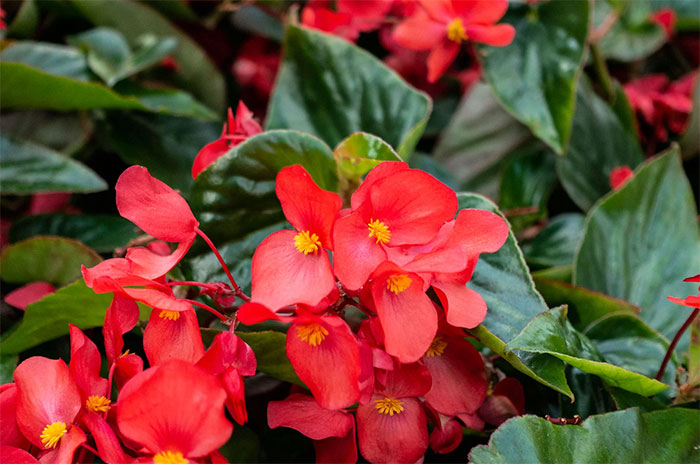Begonia Flower Symbolism Facts & Meaning: Zodiac, Superstitions, Dreams, and Legends
I
Begonia Flower Facts
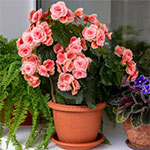
There are various fascinating things to know about Begonia. For one, its bloom actually bears a fruit, winged capsule that splits in half to disperse seeds characterized as fine textured and comparable to dust. It is in fact recognized as the flower capable of producing the smallest seeds.
The plant is indigenous to tropical and subtropical areas all over the planet. It is a type of flower with a broad variety of colors, sizes, and other features. Begonias come in more than a thousand different types, and the majority of them grow naturally in shaded areas. Three categories—tuberous, semperflorens, and rare perennials—are used to classify the plant.
Tuberous Begonias, also known as tuberhybrida, which is one of the types of Begonias has huge, spectacular flowers that bloom in pink, yellow, red, white, and orange. They are the type with edible blossoms and a flavor reminiscent of citrus.
The evergreen perennials Rex and Angel Wings Begonias can be grown in pots or garden soil. While the Annual Wax Begonias have roots that are fibrous making the use of pots unfavorable. The Rieger and Elatior variety called Winter-Flowering Begonias are known for surviving the winter. Their foliage is green-bronze in color, where the flowers are red, pink, or white. ‘Merry Christmas Begonia’ has smooth red and green leaves that resemble lopsided hearts growing 10 to 12 inches tall. ‘Fireworks Begonia’ has silver wing-shaped leaves with a maroon center and margin that reaches a height of 6 to 14 inches.
The flower has a connection to melons, cucumbers, squash, pumpkins, and gourds. This is alike to the wax semperflorens Begonias and tuberous Begonias having a zesty flavor as previously mentioned.
Rex Begonias are rhizomatous plants that are propagated because of their vibrantly beautiful leaves. These magnificent Begonias grow best indoors or in containers placed in partial shade. The leaves can be a kaleidoscope of colors that range in hues of green, red, pink, silver, gray, or a shade of maroon, so deep that they appear black. With pointy, sharply lobed leaves that are purplish-red and dusted with pink and silver, the classic rex Begonia hybrid “Helen Teupel” grows to a height of 12 inches.
The Begonia’s gigantic male and female flowers both develop on the same plant. The male flower has a number of stamens, while the female has an ovary and up to four stigmas, which are generally branched or twisted. Begonias come in many different species, hybrids, and variants in addition to their many different species. It is an alluringness adored by many collectors and cultivars.
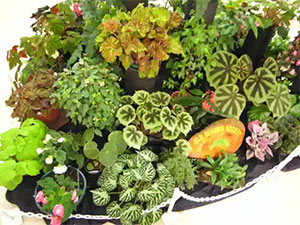
II
Begonia Flower Uses
These subtropical flowers can be offered as a thank-you gift, an anniversary gift, or a congratulatory gift.
Being medicinal, the body can benefit from the flower. A primary attribute is support to the immune system by providing an adequate amount of vitamin C. Indeed, plants are a true source of remedy for a variety of medical issues. In fact many doctors are still using this outdated homegrown knowledge to treat patients with certain medical issues.
Constipation can be treated with an oral infusion that deals with the problem at its source. Moreover, the root’s juice can also be diluted with water to create an eyewash that can treat conjunctivitis. To treat headaches and fever, the flowers are steeped in water for drinking. In addition, it eases inflammation and promotes digestion.
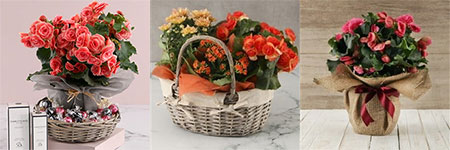
III
Begonia Flower History
Charles Plumier gave the blooming plant its name in honor of Michael Bégon (who was the first to describe Begonias in 1690). In story, King Louis XIV gave the superintendent of ships, Michael Bégon, the task of putting together a group of researchers to travel on a botanical voyage to the West Indies in 1689. Marseilles doctor Joseph Donat Surian was chosen by Bégon to serve as the team’s captain. Charles Plumier, was the assistant to Surian with the research, who created illustrations of the flora that Surian collected. When Linnaeus included the name of the plant in his renowned encyclopedia “Species Plantarum” in 1753, the name was formally adopted.
The foremost known location where tuberous Begonias were discovered, which is an optimal growing habitat for Begonias, were the steep slopes of the Andes Mountains, surrounded by forests. Higher elevations have milder temperatures, while rainforests offer lots of moisture and shade.
Richard Pearce, a British plant hunter, first introduced Begonia to England in 1886 which started the hybridization. This includes the double-flowering tuberous Begonia hybrid known as “Gloire de Nancy” which was developed by French Begonia breeder Victor Lemoine during this time period as a consequence of crossing three tuberous species: B. sedenii, B. veitchii, and B. pearci.
Men who traveled would bring plants, leaves, and pressed flowers back to Europe throughout the middle of the 17th century. The first Begonia plant, Begonia minor, was delivered to Kew Gardens by William Brown in 1777. Botanists started experimenting with hybridization in the early 1800s to produce new varieties of tuberous Begonia. In the 19th century, these distinctive Begonia bulbs made their debut in Europe. They have tiny flowers, little bigger than 25 cm (1 inch) in diameter. These varieties were specimens with a solitary bloom.
Under the direction of John Seden, the early attempts at hybridizing tuberous or bulb Begonias were made at Veitch nurseries. The first tuberous hybrid from Seden’s program was released in 1870. Its big, magenta-colored flowers earned it the name “Begonia sedenii”. Veitch nurseries, under the direction of John Seden, developed more tuberous hybrids as a result of the success of Seden’s initial hybridization attempt.
Botanists successfully crossed four years later the use of Begonia sedenii and Begonia dregei, a plant from South Africa with white blooms. The offspring was given the name “White Queen,” and it was the first entirely white hybrid tuberous Begonia.
IV
Begonia Flower Positive Symbolism
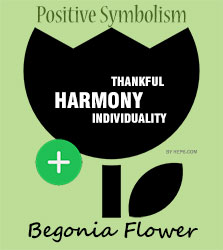
The symbolism of Begonias include individuality, harmony, and thankfulness. Additionally, each color of Begonia has its unique meaning.
V
Begonia Flower Negative Symbolism
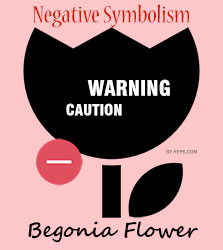
The Begonia also has negative symbolisms attached to it. It is a plant of warning on misfortune or impending bad luck. Begonia Flowers are connected to negative thoughts since they are associated with caution and warning. These flowers are believed to be surrounded by negative energy in some cultures.
If you want to warn someone about impending bad luck, you can do so by giving them Begonias. These flowers are commonly given to anyone who is recovering from an injury as well. It is to indicate you are afraid of the individual’s wellbeing.
VI
Begonia Flower Cultural Symbolism
The flower of North Korea is the Kimjongilia variety (Begonia tuberhybrida). This is in honor of the late North Korean leader Kim Jong-il. When Kim Jong-il passed away in December 2011, the flower was used to decorate his body for public display.
In many regions of the world, it is favored for medicinal properties. It is used to relieve chapped skin, especially sensitive nipples, by crushing the leaves and applying them as a poultice! The plant is also used as a remedy in Nepal to treat toe sores brought by prolonged standing. The stems are chewed by kids in northern Mexico for their reviving sour flavor and as a liver tonic to help blood purification. While in Paraguay, Begonia leaves are prepared where the sap is used to soothe sore throats.
VII
Begonia Flower Zodiac Sign

Begonia is a fantastic complement to Virgo’s practical and meticulous nature. When grown properly indoors, it produces lovely blooms in a range of hues and designs that require little maintenance.

It also works well for a Sagittarius since it smoothens out the tendency to make impulsive decisions and helps them gain wisdom and discernment.
Although the plant is not recommended for Pisces, Scorpios, or Cancers, many people who are born under these signs find that it helps to balance their emotions.
VIII
Begonia Flower in Dreams
Begonia Flowers in dreams represent the emotion of men and women saying their goodbyes. Sometimes in dreams, the Begonia represents harmony and good fortune.
Begonia Flowers in a dream about a couple in love suggests that there will be subtle changes to the relationship. In dreams of married men and women, this predicts arguments between the couple over unimportant issues. Begonia Flower dreams for romantically involved men and women foreshadow bad emotional luck, arguments, or ups and downs for many causes that they must sensibly navigate.
Begonia Flowers are a sign of long life and safety for an elderly person who dreams of them. When a patient sees a Begonia in a dream, it typically indicates that the patient will quickly recover.
Begonia Flowers are a sign of neglecting family and friends due to hectic work especially for salaried individuals, and also indicate that family members will form ideas about you.
Manual laborer dreaming of Begonia Flowers suggests that he has to pay close attention to his health, particularly the condition of his waist.
Begonia Flowers appearing in the dream of a job seeker is signifying that the search is not going well. Your performance will be impacted by several real-world factors. It advices that you must do what you enjoy doing. You need more self-assurance and you should take the time to better yourself.
IX
Begonia Flower Omens and Superstitions
Begonia Flowers that are diseased or feeble indicate the presence of negative people. A common belief links bad news with pale, wilted flowers.
If ever, even with great care, the Begonia starts to dry, this indicates that one of the family members will become ill.
Begonia has earned the moniker “the queen of the windowsill” due to its prevalence in workplaces, including schools and hospitals. Getting the desired sprout would seem to be the easiest thing to do, especially considering that, according to signs, stolen seedlings take root the best.
However, you shouldn’t do this when growing Begonia. The filtering effect of the flower draws in negative energy, which is abundantly present in public spaces.
X
Begonia Flower Mythology and Folklore
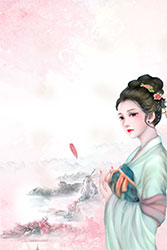
In a Chinese folklore, the Begonia is a romance flower. It is a story of a couple very much in love. However, one day the beautiful lady was suddenly left by the man.
After years of waiting without any avail, a beautiful Begonia Flower grew on the ground where she used to stand.

